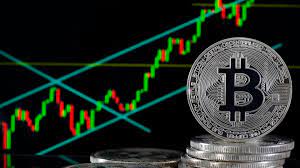In an era where blockchain technology, cryptocurrencies, and digital assets are revolutionising the financial world, fiat currencies remain the cornerstone of the global trading ecosystem. Despite the rapid evolution of digital trading platforms and the growing enthusiasm for decentralised finance, traditional currencies like the US dollar, euro, and pound sterling continue to play a vital role in maintaining liquidity, stability, and trust in markets worldwide.
As the financial landscape becomes increasingly digitised, the interaction between fiat and digital assets has taken on new importance. Traders, investors, and institutions alike are navigating this dynamic intersection to capitalise on emerging opportunities while ensuring they remain anchored in financial security. Understanding how fiat currencies function within this digital trading framework provides valuable insight into both present realities and the future of finance.
The Enduring Relevance of Fiat Currencies
At the foundation of every modern economy lies a government-backed fiat currency—a medium of exchange recognised and accepted by law. While cryptocurrencies and digital tokens are reshaping how value is transferred, fiat currencies continue to dominate in terms of transaction volume, pricing benchmarks, and global trade settlements.
One of the key reasons fiat retains its dominance is stability. Unlike cryptocurrencies, which can fluctuate dramatically within minutes, fiat currencies tend to maintain predictable value ranges, allowing for reliable trade and investment planning. Central banks regulate these currencies, using tools like interest rates and monetary policy to manage inflation and economic growth. This oversight provides a level of trust that purely decentralised currencies have yet to replicate on a global scale.
Fiat currencies serve as the primary “bridge asset” in digital markets. Whether trading crypto-to-fiat pairs or executing cross-border digital transactions, fiat remains the intermediary that enables the seamless conversion of digital value into tangible purchasing power. For institutional traders and retail investors alike, this bridge provides a sense of familiarity and financial grounding amid a rapidly evolving digital landscape.
Digitalisation of Fiat: From Cash to Code
The digitalisation of trading has transformed how fiat currencies are used and perceived. Once limited to physical cash and paper notes, fiat currencies now exist largely as digital records within complex electronic systems. Online banking, mobile wallets, and electronic payments have become the norm, allowing people to transact in real-time without ever handling physical money.
This shift toward digital fiat usage has not only increased efficiency but also democratised access to financial markets. Traders can now buy, sell, and transfer funds instantly across borders with minimal friction. The result is a more connected and inclusive financial system, where fiat currencies continue to act as the backbone of liquidity, even in crypto and forex markets.
However, digitalisation has also introduced new challenges. Issues surrounding cybersecurity, data privacy, and regulatory compliance have become central concerns for traders and institutions. The digitised economy demands robust infrastructure and reliable intermediaries to ensure secure transactions—particularly when fiat and digital assets intersect.
Fiat Currencies as a Stabilising Force in Digital Trading
In an ecosystem characterised by volatility, fiat currencies provide a necessary stabilising force. They act as a benchmark for value, enabling traders to gauge the worth of digital assets and commodities in real-world terms. For instance, when trading cryptocurrencies or CFDs, investors typically measure performance against major fiat currencies like the US dollar or the euro.
This stability also enhances risk management. By holding reserves in fiat, traders can hedge against price swings in more volatile instruments. Moreover, fiat-based trading pairs facilitate smoother transitions between asset classes, allowing investors to diversify portfolios without exposure to excessive volatility.
Liquidity is another key advantage. Fiat currencies underpin most trading pairs across forex, commodities, and digital asset markets. High liquidity ensures that traders can enter and exit positions with minimal slippage, making fiat indispensable for efficient market functioning.
The Evolving Role of Brokers and Platforms
As digital trading continues to advance, brokers and financial platforms have adapted to integrate fiat and digital assets seamlessly. Modern platforms provide access to multi-asset trading, allowing users to manage forex, cryptocurrencies, indices, and commodities within a unified ecosystem. These platforms serve as the critical link between traditional finance and decentralised innovation, offering secure and regulated environments for traders to operate.
One notable example of such integration can be found in ADSS, a globally recognised brokerage that enables traders to access diverse markets through a single, intuitive platform. By offering both fiat and digital asset trading options, ADSS exemplifies how financial technology is bridging traditional currency systems with modern, digitalised trading solutions. This approach empowers traders to harness the advantages of both worlds—leveraging the reliability of fiat while exploring the potential of emerging digital instruments.
Conclusion
The digital transformation of global finance has redefined how value is created, stored, and exchanged. Yet, even amid rapid technological innovation, fiat currencies continue to serve as the lifeblood of the trading ecosystem. Their role as a stabiliser, bridge, and benchmark ensures that they remain indispensable to traders, investors, and institutions alike.
As digital markets expand and technologies like CBDCs gain traction, the interplay between fiat and digital currencies will shape the future of trading. By understanding and embracing this balance, market participants can position themselves at the forefront of a truly interconnected financial era—where stability meets innovation, and where traditional currencies continue to thrive in a digitised world.





